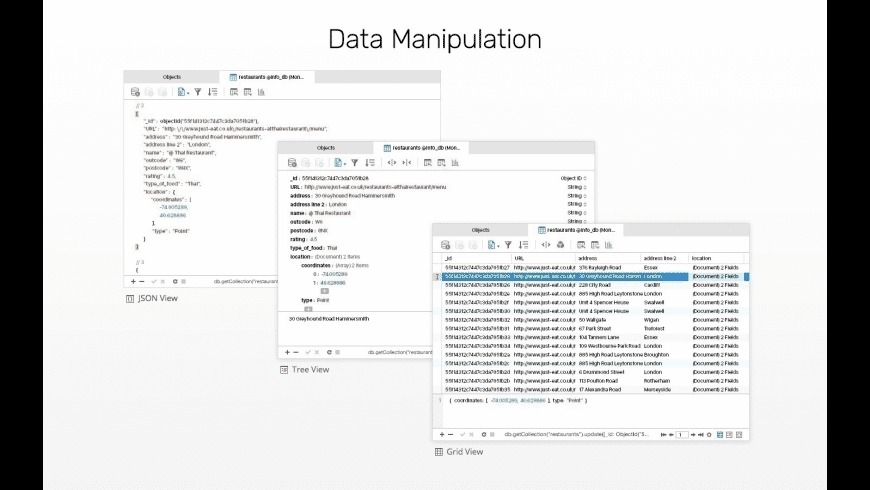Sep 19, 2021 The version of the Mac application you are about to download is 4.2.7. MongoDB antivirus report. Download Toad for Mac 2.3.6.Toad for Mac is one of the best product belongs to Developer and it supports for mac platform and its an absolute freeware from. MongoDB interactive data browser. Oracle schema compare. Object properties view. Brew tap mongodb/brew. If you have already done this for a previous installation of MongoDB, you can skip this step. To install MongoDB, run the following command in your macOS Terminal application: brew install mongodb-community@5.0. Alternatively, you can specify a previous version of MongoDB if desired.
Here we explain how to install MongoDB in a stand-alone configuration on Ubuntu and Mac. Setting up a cluster is significantly more complicated. So we will explain that in another post.
(This article is part of our MongoDB Guide. Use the right-hand menu to navigate.)
Install MongoDB on Ubuntu
MongoDB comes in Free (Community), paid (Enterprise), and cloud (Atlas) editions. It’s not easy to find the free download on their landing page, but here it is.
If you are using Ubuntu, you don’t need the download. Just run these steps to update the code repository then use apt-get to install the product.
The configuration file is /etc/mongod. It’s not necessary to change anything for a single-cluster installation.
Now start the service. The d in mongod means daemon.
Look in the log to verify that it is running and look for any possible errors.
Then open the shell.


Create a database. Just using the word use creates the database.
Install MongoDB on Mac
Here we install MongoDB on Mac. Go to this web page and fill out the version information to download MongoDB.
Update the path and make a data directory.
Download Mongodb Compass For Mac
Start the daemon, telling it where to find the database. There will be no log files, so look at stdout (i.e., the screen where you started it) for errors. With the Mac installation, there is no configuration file either as you can pass configuration options on the command line, which you can also do on Ubuntu and other platforms. Or you could create a configuration file and tell the daemon to use that.
Create a Database and add some data:
Create a collection. A collection is a group of documents, like a table in a regular RDBMS database. Notice that the use statement makes the db object come into scope, so you can use that for subsequent operations.
Nosqlbooster For Mongo
MongoDB stores documents in JSON format. So you can add any JSON. But as we will see below, you still need to tell it what fields you want to index.
Create an index. The -1 means descending order.
Add a data record: